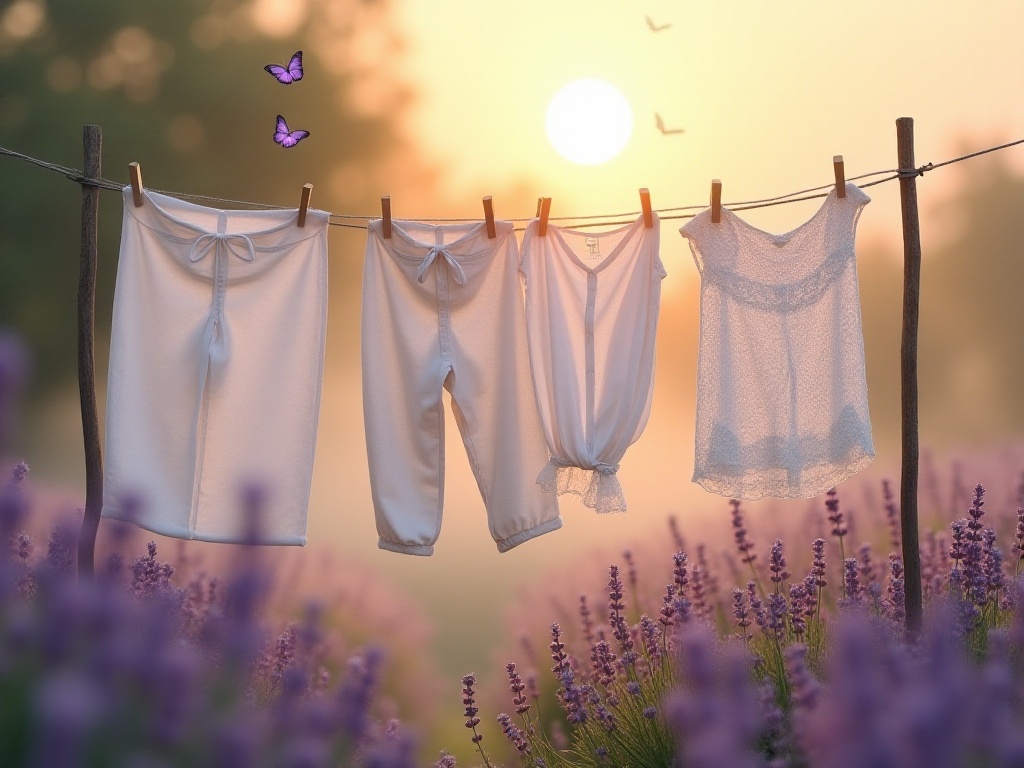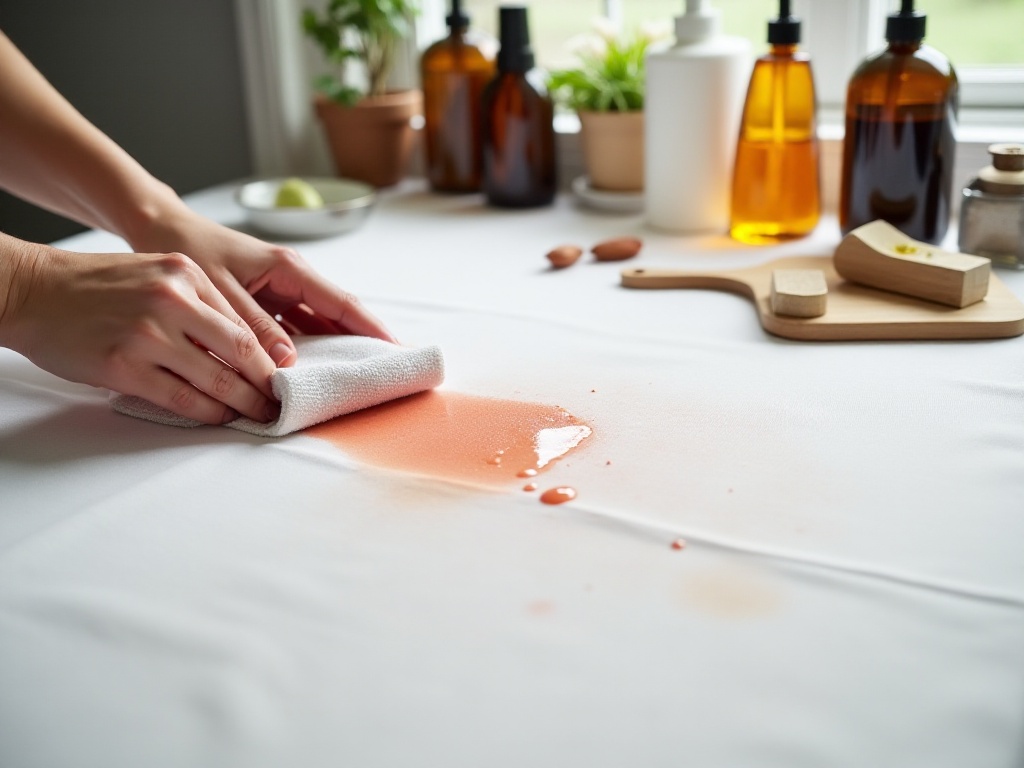Straight to the Point
As a recent graduate who just started working, I struggle with clothing care every day. New white T-shirts turn yellow after a few washes, favorite sweaters shrink until they can only be given away, and silk blouses worth half a month's salary are ruined after one wash... I understand this pain! Having studied clothing care since college, I want to share some practical tips that will help keep your clothes looking good while saving money on new purchases.
Classification is Important
I remember when I first started college, I used to throw all clothes into the washing machine together to save time. The result was predictable - white T-shirts turned pink, and my favorite wool sweater shrunk so much it could only fit a neighbor kid's doll. Since then, I learned my lesson and began seriously studying clothing classification.
First is color sorting. Dark clothes are extremely prone to bleeding, especially black and navy items. I have a pair of black jeans that cost 499 yuan. The first time I washed them with a white T-shirt, the white T-shirt turned into a "gray style." Since then, I've designated a special area for dark clothes. Based on my years of experience, new dark jeans need to be washed separately at least 3 times to ensure they won't bleed. The water turns blue after each wash, which is painful to see, but this process is essential for protecting other clothes.
When it comes to fabric classification, there's a lot to learn. Cotton and polyester are relatively easy to care for - just throw them in the washing machine. But delicate fabrics like silk and wool need to be treated as gently as you would treat a girlfriend. I have a silk shirt that cost 899 yuan, which I always hand wash separately using special silk detergent, controlling the water temperature at around 30 degrees. After three years, it still looks as lustrous as new, and friends always ask if I just bought it.
A special reminder: never mix athletic wear with regular clothes. Sweat and bacteria from athletic wear can affect other clothes, and most athletic wear is made of quick-dry fabric that requires different washing care. I collect athletic wear separately and wait until I have enough for a full machine load before washing them together.

The Art of Washing
Do those dense care labels on clothes look like hieroglyphics to you? Actually, these symbols are the "bible" of clothing care. I now have a special folder in my phone's photo album with pictures of care labels for all my expensive clothes. I check them before each wash - it's a bit troublesome but definitely worth it.
For example, I have a knit cardigan labeled for 40-degree water. Once when I was in a hurry, I carelessly washed it in hot water, and the garment was ruined. Since then, I've been very particular about water temperature. Now I use a thermometer to check water temperature before washing, though my family thinks I'm a bit obsessive, but at least my clothes are well-protected.
Choosing detergent is also an art. There are many detergents on the market, but expensive doesn't mean better. I personally recommend neutral detergents, as highly alkaline ones can damage fabric fibers. You should choose specific detergents for different fabrics - wool-specific for wool sweaters, silk-specific for silk garments.
Here's a detail many people overlook: detergent amount. From my experience, most people use too much detergent, thinking more detergent means cleaner clothes. Actually, it's the opposite - excess detergent not only doesn't clean better but can remain in fabric fibers, causing clothes to become stiff and yellow. I now use a measuring cup to precisely measure detergent, generally adding about 1% of the clothes' weight.

Jeans Care
Speaking of jeans, they're my favorite. From college until now, I have at least ten pairs in my closet, each carefully maintained. Many people think jeans need to be washed immediately when dirty, but this is a misconception. According to Levi's research, jeans only need washing every 3-4 wears; excessive washing actually damages the denim fabric.
My favorite vintage wash jeans have been with me for five years, from college through work, and they're still my favorite. People always ask if they're new when I wear them. Here are some secrets for maintaining jeans:
First, always turn them inside out before washing. This reduces wear on the front, especially the distressed areas - inside-out washing protects them well. Second, water temperature must be below 30 degrees, using special denim detergent. I once used regular laundry powder, and those jeans immediately faded.
The most important is drying method. Dryers are absolute enemies of jeans! High temperatures cause denim fibers to deform and accelerate fading. I air-dry jeans in a cool, ventilated place. Although it takes longer, this best preserves the jeans' fit and color.
Another tip is about odor removal. Jeans inevitably develop odors with wear but can't be washed frequently. You can put them in a sealed bag and freeze them overnight. The next day, most odors will be gone. I've used this method for several years with great results.

Special Fabric Care
Special fabrics can be both loved and dreaded. Wool sweaters and silk garments are comfortable to wear but challenging to maintain. Don't worry though - once you master the basics, it's not that difficult.
Let's start with wool sweater care. Temperature control is crucial - must be below 30 degrees. I bought a special thermometer and check water temperature before washing wool sweaters. Use wool-specific detergent, never regular laundry powder - those highly alkaline detergents will destroy wool fiber structure.
When washing, gently massage - don't scrub like you would a T-shirt. I once had an expensive cashmere sweater that pilled because I scrubbed too hard. Now I soak wool sweaters in mild soapy water and just press gently - this removes dirt without damaging wool fibers.
Drying is also technical. Never hang wool sweaters like regular clothes - they'll deform. The correct method is laying them flat on a drying rack, preferably a specialized sweater drying rack. I bought a foldable drying rack online specifically for wool sweaters and other delicate fabrics. When drying, shape the garment properly, especially collars and sleeves, to prevent deformation.
Silk garment care requires even more caution. First, silk should be hand-washed at around 25 degrees. Use silk-specific detergent, wash very gently - no wringing or scrubbing. I soak silk garments in detergent solution, press gently a few times, then rinse in clean water.
When drying silk, avoid direct sunlight - dry in a cool, ventilated place. I have a special corner on my balcony for drying silk garments. Don't use regular hangers - use wooden or pearl hangers to avoid leaving marks.

Handling Emergencies
Who hasn't experienced the embarrassment of suddenly staining clothes? Getting soy sauce on new clothes or coffee splashes at important occasions... these are frustrating moments. Don't panic - here are some emergency handling tips.
First remember to treat stains quickly. According to professional fabric cleaning experts, the golden window for stain treatment is within 30 minutes. Stains haven't fully penetrated fibers then and are easier to treat. I now carry a portable stain removal pen for emergencies.
Different stains require different treatments. For oil stains, first absorb surface oil with kitchen paper, then sprinkle talcum powder or cornstarch, wait 15 minutes and brush off gently. I once successfully saved a white dress from oil stains using this method.
Wine stains require special treatment. Immediately soak the stained area with soda water, then absorb with kitchen paper. If stains remain, treat with a mixture of white vinegar and water. Once at a party, I accidentally spilled wine on light-colored pants - used this method and now you can't tell there was ever a stain.
Coffee stains also have techniques. First rinse with clean water, then use professional stain remover. If none is available, lemon juice works - its acidity helps break down coffee stains. I treated coffee stains on a beige wool coat this way with surprisingly good results.
Storage Secrets
After discussing washing, let's talk about storage. Many think clothes are fine once clean, but that's not true. Improper storage can undo all your careful maintenance. According to statistics, improper storage can reduce clothing lifespan by 30%.
First, about hanger selection. I strongly recommend investing in good hangers. Regular plastic hangers can leave shoulder bumps and easily deform. Professional wooden hangers, though expensive at around 50 yuan each, are worth the investment considering how they extend clothing life. My closet now has all wooden hangers, different shapes for different types of clothes, maintaining garment shapes well.
Hanging clothes has techniques. Suits and coats must be hung properly, paying attention to hanger direction. I've seen many people carelessly hang suits, resulting in deformed shoulder lines. The correct method is aligning hanger curves with shoulder lines to maintain garment shape.
Knits and sweaters should be folded, not hung. I dedicated a drawer in my closet for these easily deformed items. When folding, don't stack too high or bottom items will deform. I generally fold by color and thickness for organization and easy access.
Silk garment storage requires extra care. Best stored in individual dust bags as silk easily attracts dust and odors. I use special dust bags for each silk garment and include desiccants to prevent moisture damage.
Seasonal clothing storage is also important. For heavy winter clothes, clean thoroughly before storage, ensuring no stains or odors, then store in vacuum bags. I have a special storage box on my balcony for seasonal clothes. Air out clothes before each season change to maintain freshness.

Final Thoughts
Through years of practice, I've deeply realized: clothing care isn't a hassle but a life wisdom. When every piece in your wardrobe maintains its best condition, your quality of life improves. Wearing well-maintained clothes daily not only boosts confidence but saves money on new clothes.
Clothing care is like dating each garment, requiring attention and effort. But once you master the right methods, the process becomes enjoyable. I hope my sharing helps everyone better care for their clothes, allowing each beloved piece to accompany us longer.
Do you have any clothing care concerns or good methods to share? Welcome to tell me in the comments.




